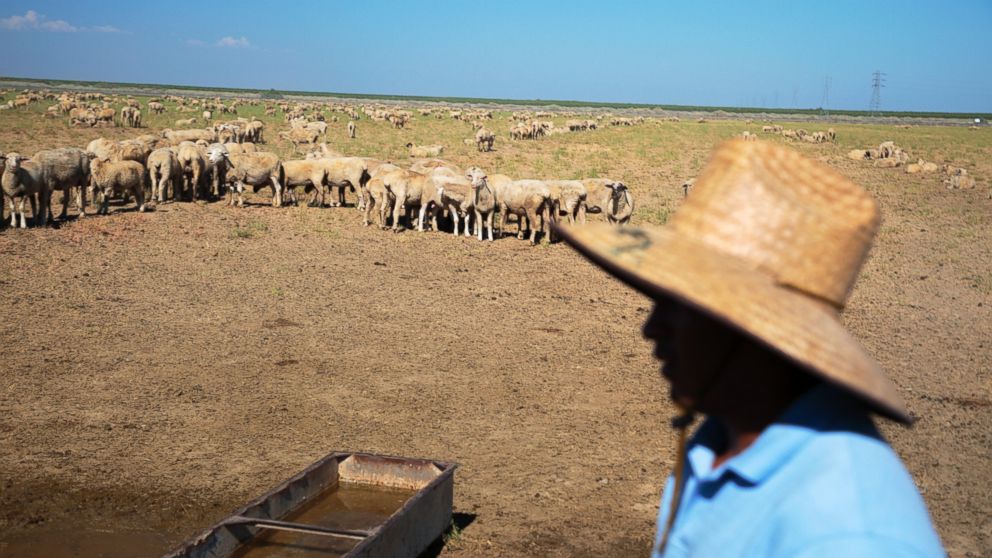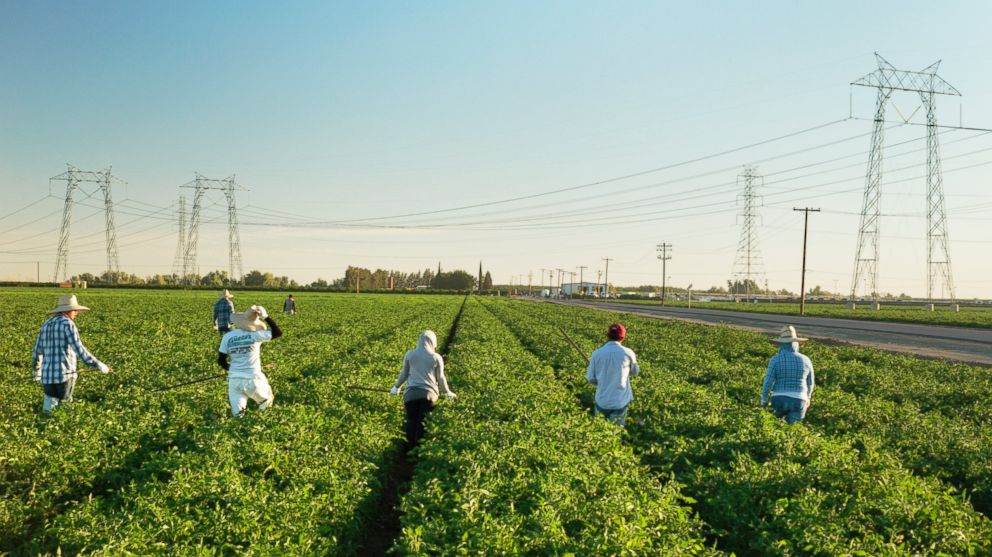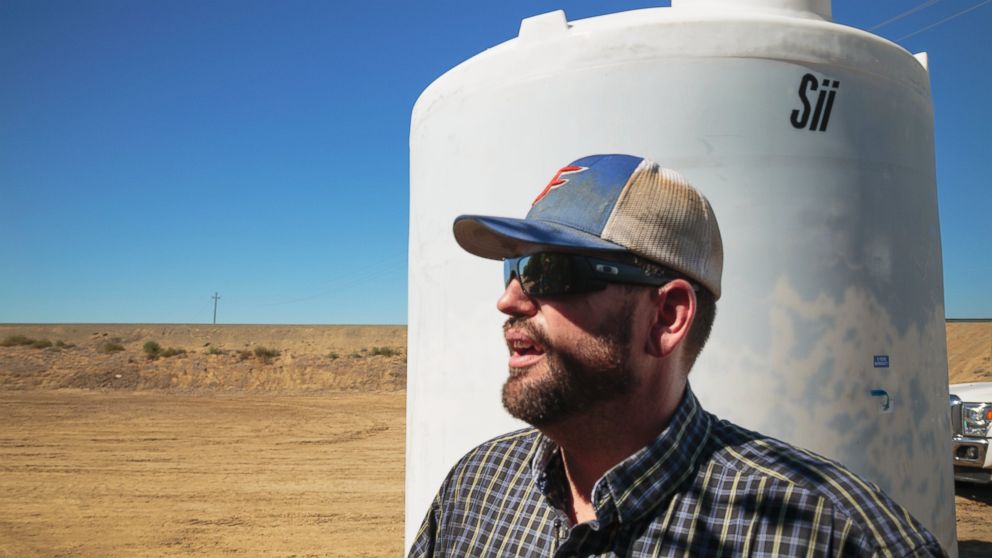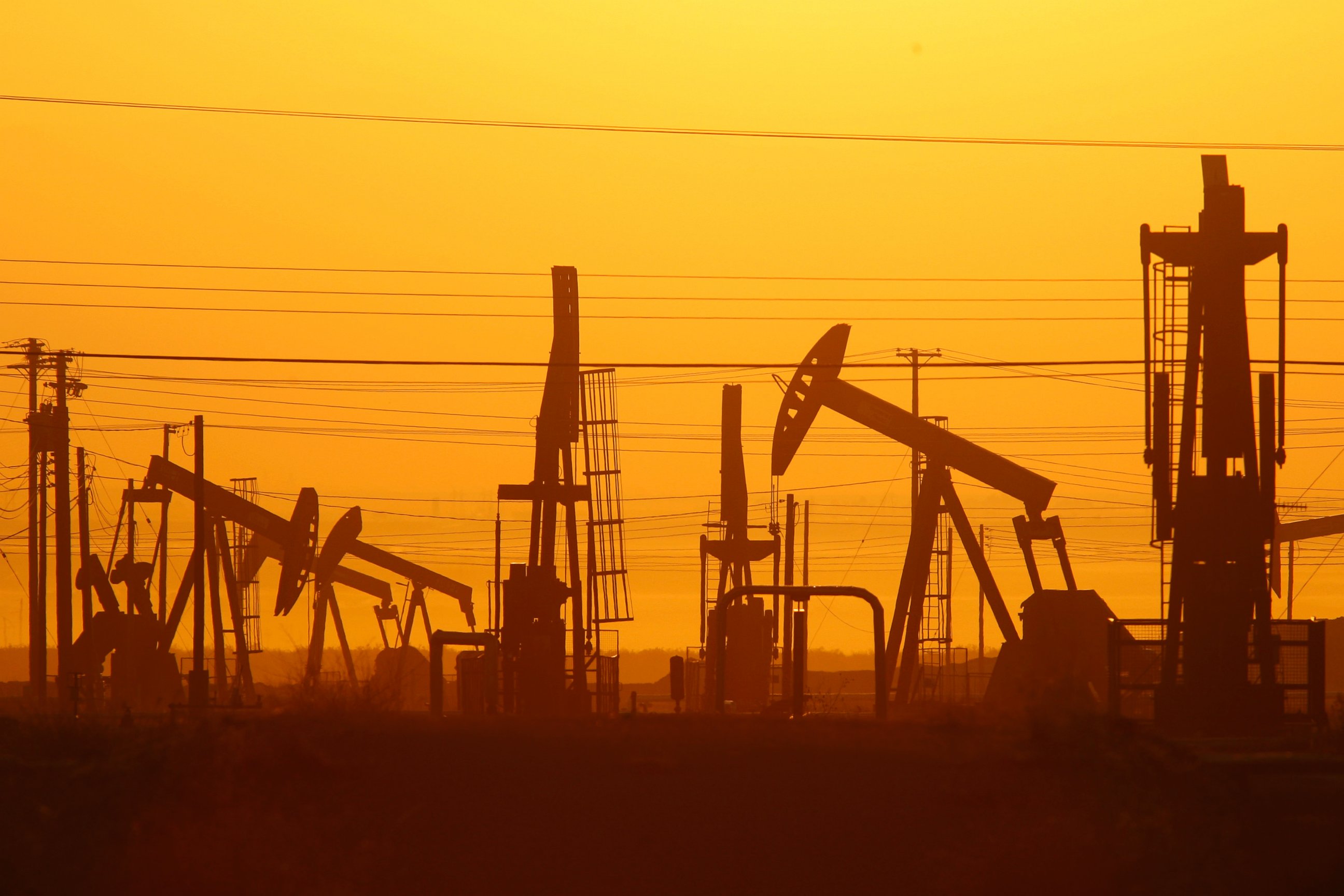California's Drought Plan Mostly Lays Off Agriculture, Oil Industries
Gov. Jerry Brown's historic water conservation rules make some big exceptions.
— -- When California Gov. Jerry Brown ordered mandatory water conservation measures for the first time in state history last week, agriculture, the state’s biggest water user, was largely exempted from the new rules, an omission that quickly drew criticism even among fans of the measure.
“It is striking that his executive order refines restrictions to the urban sector that consumes only 20 percent of California’s water and leaves the agricultural sector, which consumes 80 percent of the water, untouched at least for the moment," said Mark Hertsgaard, an environmental journalist and author who lives in San Francisco. "You can’t leave 80 percent of the problem off the table.”
The majority of the governor’s mandates targeted urban water use, which Brown hopes can be reduced by 25 percent of 2013 levels. The measures include replacing 50 million square feet of lawns throughout the state with drought-tolerant landscaping and requiring large landscapes such as campuses, golf courses and cemeteries to make significant cuts in water use.
Regarding agriculture, Brown’s executive order mandated that irrigation districts develop drought management plans and directed the State Water Resources Control Board to step up efforts to curtail wasteful water practices in agricultural fields. The state also passed its first groundwater law last year, aimed at limiting the amount of groundwater farmers can drill for. But critics argue the law doesn't call for sustainability until the 2040s, and scientists aren't sure if ground water supplies can last that long.
“The order does not deal with the fact that farmers are accelerating the planting of water-intensive crops, primarily for export, at the same time residents are being required to reduce their water by 25 percent,” said Jonas Minton, a water policy adviser for the Planning and Conservation League and a former state water official.
Minton argued the order should have included restrictions on planting water-intensive crops and more regulations for groundwater drilling.
“People are willing to sacrifice when they believe it is a shared sacrifice,” Minton said.
California Agriculture Too Big to Fail?

California’s agricultural industry is the largest in the country, receiving $46.4 billion for its output in 2013, according to the California Department of Food and Agriculture. Although the industry consumes 80 percent of the state’s water supply, it accounts for only 2 percent of the state economy, according to the Public Policy Institute of California. California agriculture is also responsible for 69 percent of the nation’s commercially available fruits and nuts, according to the California Department of Food and Agriculture.
"They're providing most of the fruits and vegetables of America to significant parts of the world," Brown told George Stephanopoulos on ABC's "This Week" on Sunday, where he defended the measures.

The Golden State's agricultural industry has suffered dramatically under the drought, which cost the industry $1.5 billion in 2014, according to a University of California Davis study. Last year alone, farmers idled more than 400,000 acres of farmland amid abnormally dry conditions, the study added. Farmers primarily rely on the state’s snowpack to irrigate their crops, and it has been reduced to just 8 percent of its historic average.
Danny Merkley, the director of water resources at the California Farm Bureau Federation, argued that California farmers have done more to address water conservation than the government, pointing to a 43 percent increase in crop production per acre-foot of water over the last 40 years and the billions of dollars the industry spent on more efficient irrigation systems.

While many farmers are pursuing less-water-intensive irrigation practices, such as drip irrigation, more than 40 percent of the state’s irrigated acreage uses flood irrigation, a technique widely criticized for its inefficiency.
Another element critics felt was missing from the governor’s executive order was addressing the water pricing system in California. Critics argue the price of water should be raised to reflect the drought situation.
The Fracking Factor

In addition to agriculture, many environmentalists have called on the governor to include the oil industry in the new water use restrictions. Hydraulic fracturing, a process that involves injecting large amounts of water and chemicals into the ground and that critics argue can result in contaminated ground water, is widespread in California, with 84,000 wells spread out across the state as of 2014.
Proponents of hydraulic fracturing can point to the $24 billion in tax revenue the industry is expected to bring the state over the next year, according to a UC Davis study, and to the relatively low amounts of water the California wells are forced to use, for geological reasons, in comparison to other states, according to the National Resources Defense Council, an environmental advocacy group.
However, in February, a report released by state regulators found that thousands of hydraulic fracturing wells were in violation of the Safe Drinking Water Act by illegally injecting toxic fluids into protected aquifers, prompting the governor to shut down 12 wells in the Central Valley that the state said were leaking carcinogens at a rate 700 times higher than federal standards allow.
“It was shocking, especially in the midst of our drought,” said Adam Scow, California director of Food and Water Watch. “The groundwater is our savings account for water in California and not only were we over-drafting it, but polluting it with toxic chemicals.”
Tupper Hull, spokesman for the Western States Petroleum Association, said nobody's groundwater is being contaminated, adding that the question of whether or not contaminants are being disposed of in protected California aquifers turns on a discrepancy between the state and EPA definitions of aquifers appropriate for disposal wells.
“The state did not evolve its permitting to keep pace with the evolution of oil production activities," he said. "Now, we’re at the end of the [process of the] state and the EPA working through the deficiencies to come up with a plan to correct it.”
Two days before announcing his executive order, Brown rejected a legal petition of more than 100,000 signatures to place a statewide moratorium on hydraulic fracturing.
“He’s been a world-class leader on climate change, but he has not banned fracking,” Hertsgaard said of Brown. “My daughter and the other kids are going to need that groundwater.”